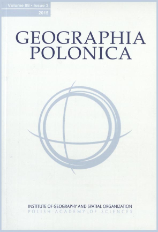- Tytuł:
-
Comparison of two methods of warm and cold wave identification based on the example of selected cities of the moderate and cold zone
Geographia Polonica Vol. 88 No. 3 (2015) - Autorzy:
- Krzyżewska, Agnieszka
- Data publikacji:
- 2015
- Wydawca:
- IGiPZ PAN
- Słowa kluczowe:
-
fale ciepła i zimna
thermal wave identification methods
metody identyfikacji fal termicznych
warm and cold wave
large cities of the world
wielkie miasta świata - Źródło:
-
http://195.187.71.2/ipac20/ipac.jsp?profile=geogpan&index=BOCLC&term=ee95400564
CBGiOS. IGiPZ PAN, sygn.: Cz.2085, Cz.2173, Cz.2406
CBGiOS. IGiPZ PAN, call nos.: Cz.2085, Cz.2173, Cz.2406 - Język:
- angielski
- Prawa:
-
Licencja Creative Commons Uznanie autorstwa-Bez utworów zależnych 3.0 Polska
Creative Commons Attribution BY-ND 3.0 PL license - Linki:
- https://rcin.org.pl/dlibra/publication/edition/56792/content Link otwiera się w nowym oknie
- Dostawca treści:
- RCIN - Repozytorium Cyfrowe Instytutów Naukowych
- Książka
Menu główne
Wyszukiwarka
Treść główna

